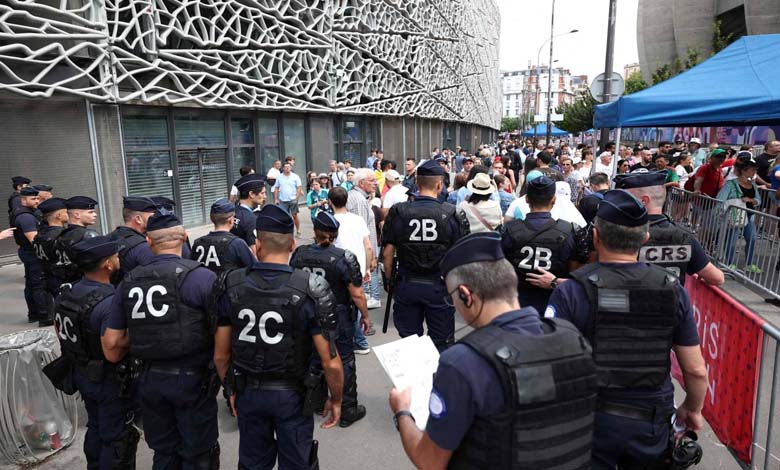An Army of Security Forces to Secure the Opening of the Paris Olympics

The perimeter of anti-terrorism protection, in effect since July 18, will become stricter on July 26.
French authorities have mobilized exceptional security measures, involving tens of thousands of security forces and the army, in anticipation of a possible drone attack and to close the airspace up to 150 km around Paris to secure the opening ceremony of the Summer Olympics on the Seine on July 26, amid fears of terrorist threats.
The assassination attempt on former US President Donald Trump, carried out from a rooftop, served as a reminder of the severity of this threat.
To bolster the security arsenal, around two thousand private security personnel and one thousand municipal police officers from the city of Paris have been added to the police and gendarmerie forces, along with ten thousand soldiers. Snipers will be deployed on the rooftops of Paris along the Seine to neutralize any armed individual targeting the crowd or a delegation of athletes on a boat, or a visiting head of state or government.
For the first time, elite units of the police and gendarmerie will work together, with about 200 police officers from the RAID unit (Research, Assistance, Intervention, and Deterrence) ensuring security on the river, while 350 gendarmes from the counter-terrorism and crisis management unit will secure the spaces. Around one hundred police officers from the research and intervention brigade (BRI) of the police headquarters will protect the docks. The elite gendarmerie intervention unit (GIGN) will also be responsible for securing the movements of heads of state and government and will ensure the protection of athletes in the buses transporting them to the boat embarkation area and during their embarkation until their disembarkation at the Trocadéro square.
The perimeter of anti-terrorism protection, in effect since July 18, will become stricter on July 26.
The police headquarters explained that from 1 p.m., car traffic will only be allowed for security forces, ambulance, and emergency services, adding that from four hours before the start of the ceremony, spectators with tickets will be able to access one of the fifteen standing sites, comprising 222,000 free seats on the high platforms, or to their seats in the stands, comprising 104,000 paid seats on the lower platforms.
They will first have to undergo initial checks where their tickets will be verified by the police or gendarmerie, then they will be searched and their bags inspected. On the high platforms, a security zone will be created between the barriers at each site to prevent crowd movement or allow for spectator evacuation, especially in case of fainting.
French authorities announced that the airspace around the capital and up to 150 km will be temporarily considered a no-fly zone from 4:30 p.m. until midnight.
As a result, air traffic will be halted at Paris Charles de Gaulle and Orly airports, as well as at Beauvais airport. If an aircraft refuses to identify itself and provide its legal information, a helicopter or fighter jet will be sent to negotiate. In case of non-compliance, a warning shot may be fired or the aircraft may be shot down, which has never happened before.
The air force will coordinate the fight against drones, which the interior minister identified in 2022 as one of the main threats to the ceremony. About fifteen fixed “heavy” systems will be deployed during the Olympics, along with jamming rifles, lasers, or interceptor drones equipped with nets.
Prime Minister Gabriel Attal explained on Tuesday that an average of six drones have been intercepted daily for about ten days near the Olympic sites.
About one hundred bomb disposal divers will participate in the opening ceremony and will be ready to intervene in case an explosive device is discovered during the river parade.
Upstream of the river, elements from the police headquarters, civil security, and the army inspected the structures of about 300 boats, including 85 for athlete transportation, and the docks to ensure there are no bombs or mines. The interior parts of the boats were also carefully inspected by teams of dogs specialized in explosive detection.
This massive operation, carried out between the Garigliano bridge near Issy-les-Moulineaux (Hauts-de-Seine) and the Nelson Mandela bridge in Ivry-sur-Seine (Val-de-Marne), mobilized 120 members of the gendarmerie, national police, customs, prison administration, and the army, with the assistance of foreign delegations, including Austria, the UAE, and Bulgaria.
Since Saturday, river traffic has been completely closed thanks to three anti-intrusion barriers, two at the entrance and exit of Paris and the third between the Austerlitz and Lyon stations.












